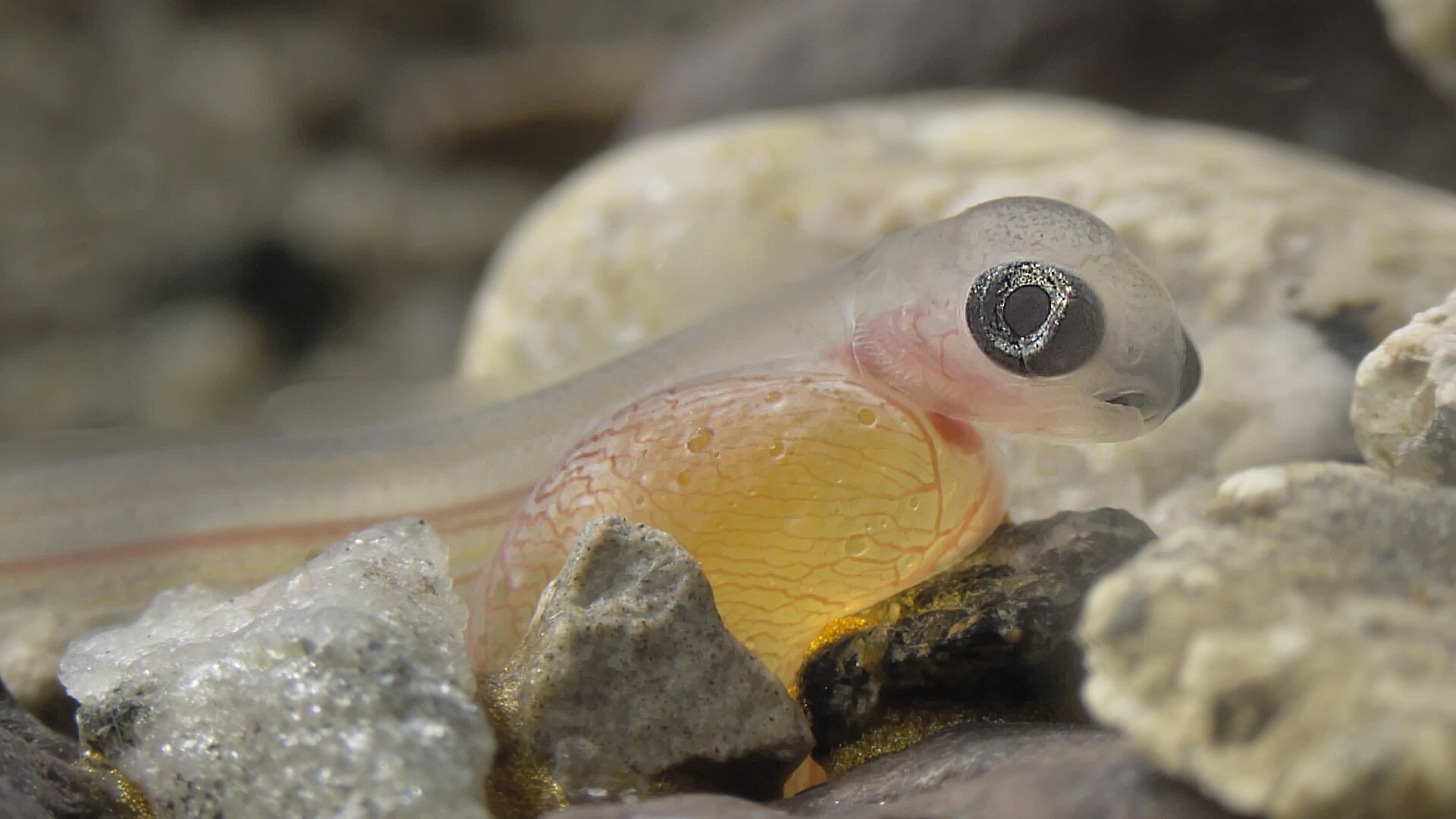May
Plum sack fry. Photo: Arnt Mollan
Some come - some go
May is a busy time for both large and small wild salmon in many rivers. The very smallest wild salmon now living in the river are the fry that not long ago fought their way out of the roe. After they have used up the nutrients in the yolk sac they brought with them when they hatched, they have to find their own food. It's a tough life, and the little fry need good hiding places. They also have fry from older year classes around them. They range from one to four or five years old, depending on which river they were born in. They all fight for food and space.
Many of the adult salmon that participated in the spawning last fall have survived the winter without eating. Now they are razor-thin and getting ready for another trip to the sea. These are called winter fry. Some have already left. In the rich food supply in the sea, the winter fry put on weight quickly, and these salmon can get really big.
The young salmon have gone through a period of great change, and both their appearance and behavior have changed. Now they are silvery shiny and allow the current to carry them down the river. When this happens, we call them smolts. In groups, they suddenly decide to leave their natal river. On their migration out towards the sea, they will certainly meet adult salmon from the same river on their way home to spawn. May summarizes almost the entire life cycle of wild salmon.

